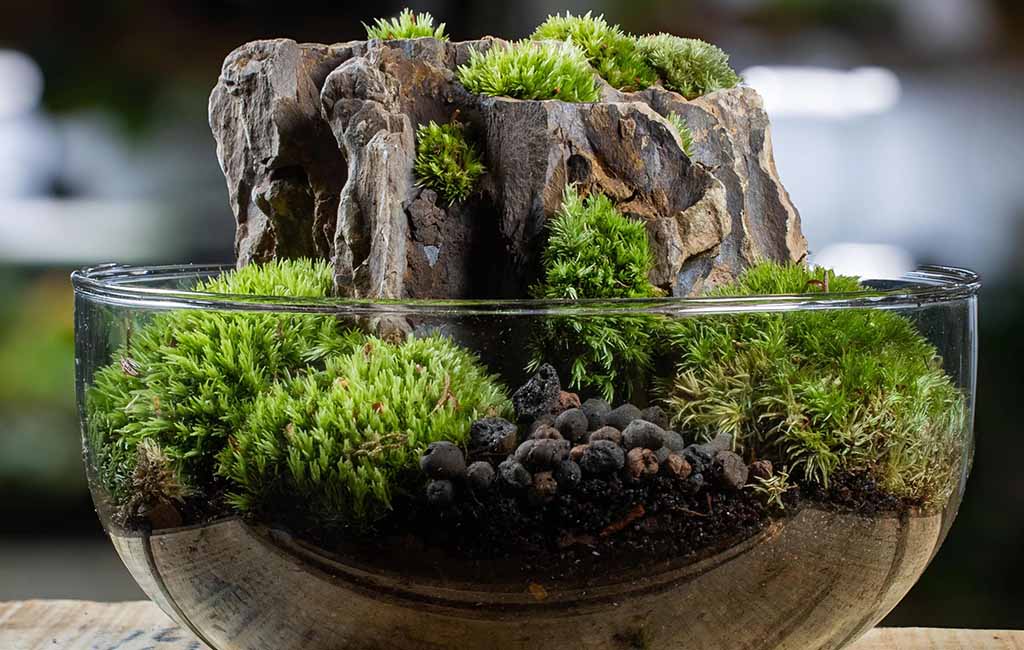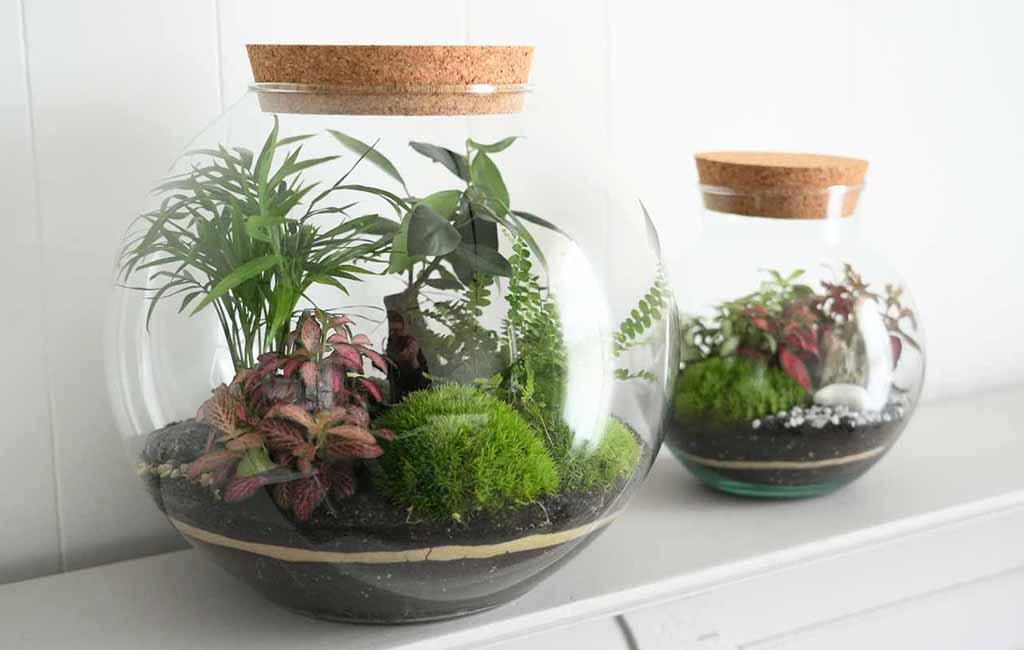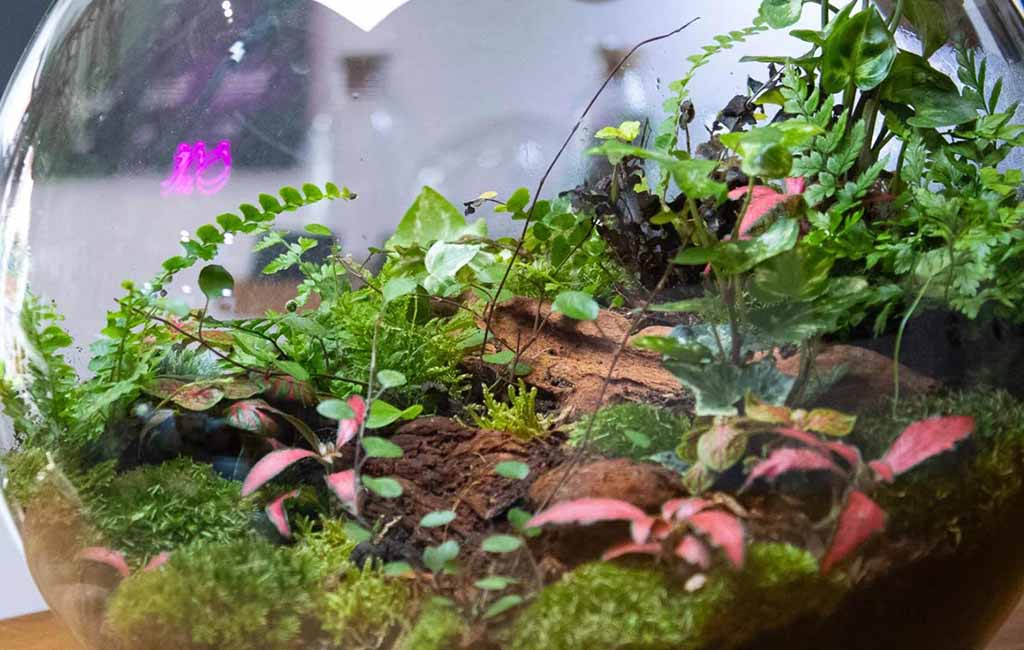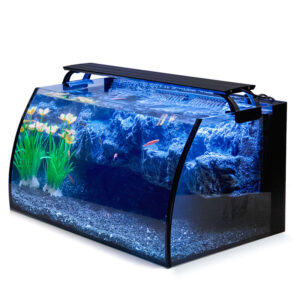A terrarium is defined as a miniature garden placed in a container that is then enclosed in glass, with low demands on the maintenance of the plant life. Suitable for everyone who likes plants and interiors, they add a piece of nature and life to the interior. Together with this article, you can learn all the basic facts about preparing a terrarium and how to make a terrarium that will endure for years.
Content Table

Types of terrarium
What Is a Terrarium?
A terrarium is a self-growing and centrally closed organism characterized by glass enclosures and mainly used for growing plants. Semipermeable barriers that mimic natural habitats are perfect for exhibiting foliage densely and neatly. Terrariums can be closed, or they can be open, depending on the kind of terrarium plant you intend to use and the general look you would like to make.
Types of Terrariums
- Sealed Terrarium: These have lids and should be used with plants that require humidity such as ferns, mosses, and air plants.
- Open Terrarium: Terrariums without roofs help the air circulate better, which is best for succulents, cacti, and other low-humidity plants.
- Hanging Terrarium: These are commonly miniature, which makes them ideal for air plants or small types of succulents.
- Aquatic Terrarium: These terrariums enhance a touch of water, water bodies, or waters, and they have stunning and impactful aesthetics.
The Purpose of a Terrarium
Many people use terrariums because they can blend aesthetics and practicality all at the same time.
Key Purposes:
- Decorative Appeal: Can be used to enhance natural aspects in a home, office space, or even classroom setting.
- Educational Tool: Explains plant life and plants in more detail and tells about different ecosystems with audience interest.
- Therapeutic Benefits: It is a known fact that having plants can help relieve stress and have positive effects on their mental states.
- Environmental Control: May be used to create a suitable growing environment for plants that cannot grow in a normal indoor environment.
Features and Benefits
- Low Maintenance: Requires minimal watering and care, especially sealed terrariums that recycle moisture.
- Space-Saving: Fits perfectly in small spaces, such as desks, shelves, or countertops.
- Eco-Friendly: Promotes greenery and sustainability by creating self-contained environments.
- Customizable: Easily tailored to reflect your style with a variety of plants, containers, and decorations.

how to prepare terrariums
How to Prepare a Terrarium
Preparation is key to building a thriving terrarium. Here’s what you’ll need:
Materials:
- Glass Container: Choose a container with or without a lid, depending on the plants you want to grow.
- Gravel or Pebbles: Forms the base layer for drainage.
- Activated Charcoal: Prevents odors and bacteria buildup.
- Potting Soil: Use soil that suits your chosen plants.
- Plants: Select small, slow-growing plants suitable for terrariums.
- Decorative Elements: Optional items like small stones, figurines, or moss for aesthetic enhancement.
Tools:
- Small trowel or spoon
- Tweezers for precise placement
- Spray bottle for misting
- Brush for cleaning glass surfaces after assembly
Pre-Assembly Steps:
- Clean the Container: Ensure the glass is free from dust or residues.
- Choose Your Plants: Pick plants with similar light and humidity requirements.
- Plan Your Layout: Sketch or visualize how you want the terrarium to look.
- Prepare Materials: Arrange your materials and tools in an easily accessible workspace.

how to make a terrarium
How to Make a Terrarium
Crafting a terrarium is a simple yet rewarding process. Follow these steps for a stunning result:
Step-by-Step Guide
- Start with Drainage:
- Place a 1-2 inch layer of gravel or pebbles before laying the growing medium in the pot. This layer is very important to provide drainage so that water does not accumulate in the bottom part, siphoning off what remains of the root system.
- Pour a thin layer of the activated charcoal on the top of the gravel layer. It serves to clean the air and water within the terrarium, thus it stays fresh and has little chance of developing mold or bad odors.
- Add Soil
- Smoothly over this layer 2–3 inches of the potting soil over the drainage material. The type of soil should depend on what type of plant you have; for instance, cacti require sandy socialite they do not require much water while plants from the tropics require a good isotropic to retain water.
- Flatten the ground by tilling the soil and getting it to a level where seeds will be planted. If you wish to make a landscape effect, then consider raising the ground at one side for an inclined look.
- Plant Your Greenery
- Start by making small indentations for your plant in the soil; arranging the largest plant to form the basic layout of the terrarium.
- Transplant the plants carefully from their pots; do not pull the roots too far apart before putting them into the soil. Put each plant well in the holes provided and cover the roots with the soil, then pack them tightly.
- For the small plants, mosses, or ground covers, you should use tweezers to place them in the most appropriate place for the other plants. This should be considered in the development of your plants so that the young seedlings do not roost themselves out.
- Decorate
- Add some individuality to your terrarium by getting decorations such as stones, statues, or other accessories. These additions can give your terrarium a way of looking like a whole new world or an art piece.
- Do not clutter the container with excessive accessorization because it will overwhelm the plants.
- Water Sparingly:
- Water the soil and the plants using a water spray gun or a simple spray bottle, just enough to wet the surface. Overwatering must be prevented, particularly if it is in a closed terrarium type wherein the plant may suffocate in the excess moisture, and the roots may rot.
- For open terrariums, caring will include checking on the state of the soil or the plants in it and watering the soil only when you feel it is dry.
- Position Your Terrarium:
- Put the terrarium at a location with proper lighting requirements. Practically all plants prefer bright diving light, and most of them cannot stand direct sunlight. Do not put sealed terrariums in direct sunlight because the glass acts as a magnifying glass and is bad for the plants.
- The terrarium should also be occasionally rotated to allow each plant to receive an equal amount of light in the growth process.
Tips for Success
- It can be done by selecting plants that require similar conditions of light exposure, irrigation, and humidity for good coexistence.
- Prune plants to avoid their growth into sizes that are unmanageable and untidy.
- Do not contaminate your growing area with pests or diseases by using freshly sharpened tools and news
- When the glass in a closed terrarium develops a layer of dew, take off the cover for a while to release the condensation. The humidity level must be well maintained for a terrarium to thrive.
- Try to place them in different layers and try every type of positioning for the plants you want to place in the glass bowl.
How Long Can Terrariums Last?
With proper care, terrariums can last for years. Sealed terrariums, in particular, have been known to sustain themselves for decades, while marimo moss ball terrariums for a short time.
Longevity Factors:
- Plant Selection: Choose hardy, slow-growing plants to avoid frequent replacements.
- Environment: Ensure proper light, humidity, and temperature conditions.
- Maintenance: Regularly remove dead leaves and check for mold or pests.
Turnover Time:
- Sealed Terrariums: These are capable of lasting indefinitely with minimal intervention. They utilize a self-sustaining water cycle, where condensation from the plants and soil recirculates within the closed container, creating a balanced micro-ecosystem.
- Open Terrariums: Although these require more frequent maintenance, including watering and trimming, they can remain vibrant for several years if properly cared for. Regularly check soil moisture levels and address any overgrowth promptly.
Common Challenges:
- Condensation Issues: It can result in the growth of mold due to dampness. To prevent this, watch the humidity levels and open the terrarium occasionally to allow in more air, or take off the lid.
- Overgrowth: The plants can also grow fast to the extent of overgrowing their containers. This will ensure they are neatly trimmed and that the exterior of the glass bowl, mini bowl, or any other terrarium tanks that they are grown in look well-balanced.
- Pests: It is however important to scrutinize the plants before introducing them into the terrarium. Spray any early indications of pests as soon as possible, using natural control methods to prevent pest build-up.

Building a terrarium
Concluding Thoughts
Constructing a terrarium is one of the best techniques for having natural interior designs. The terrarium itself, its variety, its simplicity of building complex, and low maintenance requirements make terrariums ideal for beginners as well as veterans in the area of plant husbandry.
By going through the guide, it is now very easy to make a simply beautiful terrarium and bring a bit of the wilderness into your dwelling. Whether you want to create one for yourself or for gifting, the contentment of tending to your tiny garden is especially unparalleled.


Leave a comment